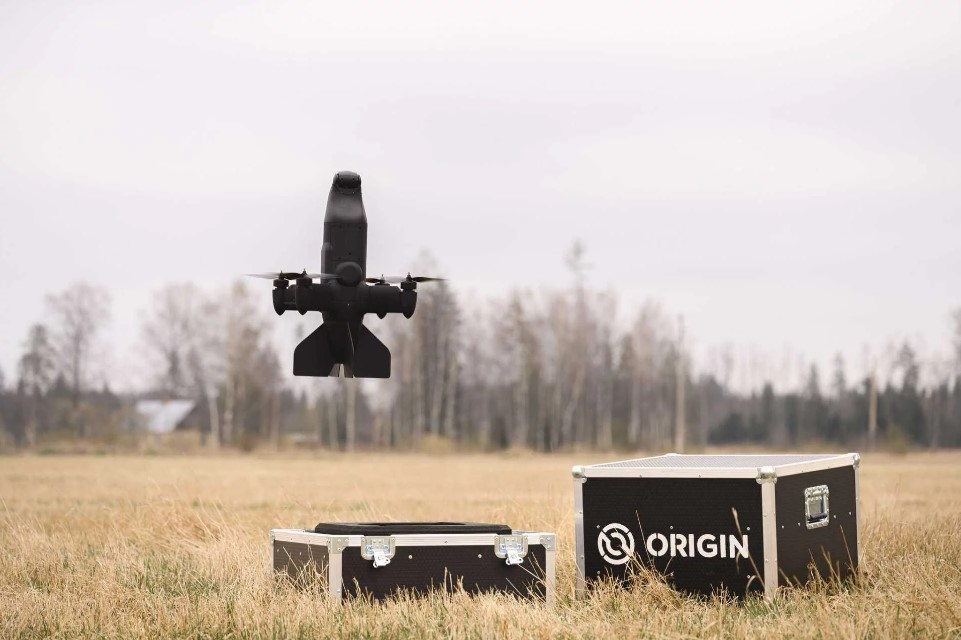Latvian startup Origin Robotics has introduced its first compact interceptor drone, Blaze — an autonomous device designed to protect against enemy drones.
The Blaze drone bridges a crucial gap in current air defense systems, positioned between traditional anti-aircraft guns and high-budget missile solutions. Conventional defenses often find it difficult to counter the sheer number and low cost of both commercial and military drones increasingly seen in modern conflicts, especially in Ukraine. Blaze offers an efficient alternative: a fast, fully autonomous interceptor that can detect, track, and eliminate hostile UAVs either by colliding with them or detonating nearby. Fitted with its own warhead, the system effectively neutralizes threats while minimizing reliance on human operators—though operators retain control until final engagement. A key safety feature is its “wave-off” capability, allowing it to abort missions and return or self-destruct safely if needed, helping to prevent unintended damage.
Unlike costly surface-to-air missile systems, Blaze is engineered to be drastically more affordable—estimated at a tenth of the cost of the drones it is built to take down. This cost-efficiency is particularly significant for countries aiming to expand their air defense networks amid the growing intensity of drone warfare. Compared to manually operated FPV interceptors, which Ukraine currently deploys, Blaze has the advantage of being easier to scale. FPV systems rely heavily on expert drone pilots, making large-scale training a significant bottleneck. Blaze sidesteps this limitation with its autonomous functionality and ease of deployment.
Developed by Latvia’s Origin Robotics, the Blaze interceptor stands out for its compact size—small enough to fit in a briefcase—and its ability to launch autonomously from a container unit. Featuring radar and AI-powered computer vision, the drone independently carries out its mission once activated. Similar concepts have been pursued by other developers, such as Israel’s Spear UAV, whose Ninox line includes tube-launched micro drones with vertical takeoff and autonomous mission capability. Although not exclusively interceptor platforms, models like the Ninox 103 can be adapted for defensive patrols. In Europe, the Allag-TJ by EDGE represents another solution: a small, high-speed interceptor with a wingspan of 0.7 meters, launched from a canister and capable of operating autonomously at altitudes reaching 7,600 meters.
At present, Ukraine is being considered as a potential first user of Blaze, building on its existing operational relationship with Origin Robotics, whose BEAK drone is already in combat service. The need in Ukraine is acute: in January 2025 alone, over 2,500 Russian drones targeted Ukrainian territory, prompting the urgent search for more sustainable air defense solutions. The Blaze interceptor emerges as a response to this pressure, with its creators aiming to provide NATO forces across Europe with a viable alternative to costly missile-based defenses.
As the nature of warfare evolves, solutions like Blaze are becoming essential. The Latvian innovation illustrates how startup-driven defense tech can offer practical, scalable tools to match asymmetric threats. In time, as militaries seek to replace legacy and expensive interception systems, autonomous and affordable platforms such as Blaze may become central to next-generation air defense strategies.





















